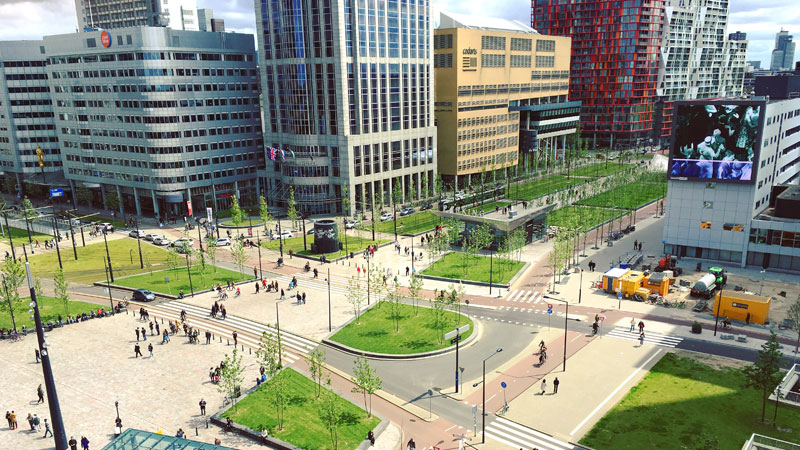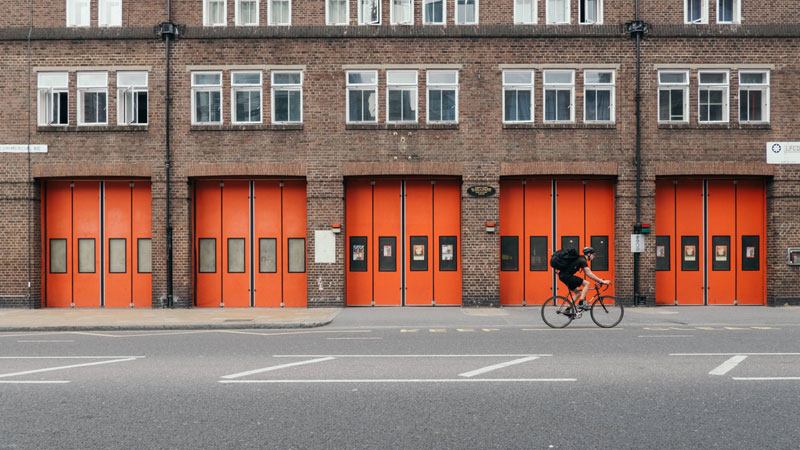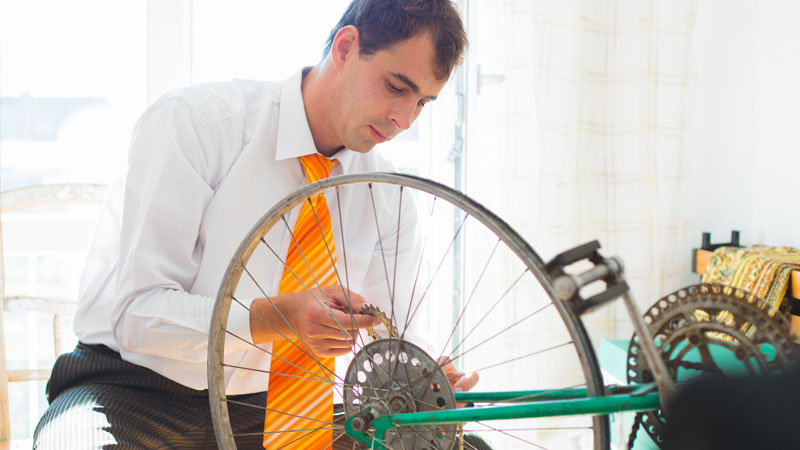You already know the wonderful pleasure bike riding brings, and if you are like most of us, you take delight in the growing numbers of people making a similar discovery. The great thing is, as rider numbers grow, there is a flow-on positive effect for all riders, which in turn stimulates others to give it a try. The thought becomes, if all these people are out riding, and obviously enjoying themselves, then maybe I can give it a try too.
Governments are pressured into improving facilities as rider numbers grow, and other road users get used to our presence, which lessens potential friction and incidents. Similarly, destinations such as workplaces, sporting grounds, shops, restaurants and public events feel the need to improve their bike facilities.
So it’s in all our interests to be seen to be riding more, and to get others to ride. And you can help with both.
Ride2Work day, the biggest mass-participation bike riding event in Australia, is on 17 October this year, and it is a fantastic way to visually highlight to the non-bike riding world how massive riding has become. But its effects last far longer than the day itself; many of those encouraged to try riding to work for the first time as part of the event will help form the new wave of people who regularly ride their bikes throughout the year.
So what role can you play? If you don’t currently ride to work, it might be time to have a close look at why, and see if there’s some way you can overcome the hurdles that are stopping you. If you do already, then you can certainly help out by mentoring other potential riders, or perhaps becoming a workplace co-ordinator. And even if you don’t work, or if it is simply impossible for you to ride to work, you can still help out by sharing your bike riding knowledge, skills and passion with others who might be able to, but lack the confidence.
Be a mentor
One of the key reasons why people don’t ride is a lack of confidence. They would like to give it a try, but are not sure what bike they should buy, where the best places to ride are, what to do if they get a flat tyre or the chain falls off, what they should carry with them in case of emergencies, and how to confidently ride in traffic. Once they’re up and running, it is likely they’ll be fine, but initially they’ll need a mentor to fall back on. And that mentor can be you.
The first step is to let those around you who don’t ride that you’re available to help out. Explain that you’re prepared to spend some one-on-one time to get a new rider started. If you’re subsequently inundated with requests, it would be best to limit yourself to one or perhaps two potential riders at a time, so you can concentrate on their needs.
If someone needs help buying a bike, you could offer to visit a bike shop with them, or perhaps you can help source a spare bike they can ride, at least initially. Ride On regularly publishes a buyers’ guide which can help you with decision making when it comes to bikes and their accessories, but just having someone who knows a little bit about bikes with them in a bike shop situation can help reduce the intimidation factor.
If you’re mentoring someone on riding to work, no doubt you’ll have some great tips that can help ease the journey. But one of the key things that can help more than any other is being there and riding the route with them the first few times they try, and helping set an initial route that is not too challenging. Usually that’s all it takes; a couple of accompanying rides, taking it easy and building confidence, while pointing out things to look out for. After that, as long as it seems you’re available for advice, they’ll be on their way.
Be a workplace coordinator
In 2011, National Ride2Work Day attracted 45,000 people across Australia, with over 7,000 of them first-time riders. This 15% new uptake is due in no small part to the more than 4,000 workplace coordinators registered with the Ride2Work program who volunteer to inspire, support, educate and encourage their workmates.
Being a coordinator for Ride2Work day on 17 October does mean taking on a bit of extra responsibility, but the rewards can be immense: as well as the benefits to the individuals who start riding, it can help transform your workplace over time from one where bike riding is viewed as a bit of an oddity, to one where it becomes embedded in the culture, with better facilities as a natural progression.
Promoting the event and creating a sense of excitement and anticipation helps stimulate the buzz around riding, and goes a long way to getting new riders to sign up.
It’s amazing what can happen once the passion for riding is unleashed. Townsville Hospital now has its own BUG, which has now linked up with the James Cook University to form an umbrella organisation, the Townsville BUG.
As a workplace co-ordinator, even getting one more person to take part in the day is a great achievement; anything else is a bonus. It’s a matter of raising the profile of riding, and letting others who may be interested know that there is a person they can turn to for support and advice.
Her are five tips for anyone trying to encourage workmates to ride to work.
1. Get management on board. Contact anyone in a position to help you promote the event. If your organisation is big enough to have its own newsletter, be sure to talk to the editor.
2. People will often say that they have thought about getting a bike, so let them know that Ride2Work Day is a good opportunity to give it a go. Offer advice and encouragement.
3. Tell people how much you enjoy it.
4. Sell raffle tickets for your workplace bicycle user group (BUG).
5. Stress how important it is to register for Ride2Work day. With supporting data on how many rode, we can provide the figures to convince workplaces and governments to spend money on bike riding infrastructure and consider the needs of bike riders in the design of roads and cities.
Get riding

You may be a rider who has contemplated riding to work, but for one reason or another, haven’t been able to pull it off. Ride2Work day is the perfect opportunity to give it a go. The trick is to start off with reasonable expectations, build up slowly, and stick with it.
Set an example for others to follow, and encourage them to join in. There can be many barriers in the way, but with clever lateral thinking, it is often the case that any obstacles can be overcome. Employ persistence and determination and you’ll get there.
Below are some of the more common questions raised, with some solutions which may work, followed by links to some valuable resources which can also help.
Am I fit enough?

Riding to work is not a race – take it easy, don’t worry about how fast others are going, and use all the gears if you’ve got. Gradually build up your fitness and health over time; this is a long-term life-changing project! If it seems simply too far, or too hard, there are alternatives. Ride to a train station on your route, secure your bike there, and use public transport for the last bit. Or drive part way, and ride the rest. You might also like to investigate using an electric bike; they are now relatively cheap, you can still get good exercise in, but can travel much further, with greater ease, than a regular bike.
What equipment do I need?
A bike (new or old) is obviously a necessity, but don’t rush in to making a purchasing decision. There is no universally right bike for commuting; some trips will regularly be only a few kilometres on suburban roads, while others may be many kilometres on a mixture of roads and trails. You don’t generally need any form of suspension, however, and a bike that you can fit mudguards to when necessary, and possibly a rack, are very handy.
A well-fitted bike is a dream to ride, so get the size and seat height right. Serviceable brakes, tyres and chain save worry and trouble. Ask your local bike shop for advice and possibly a bike service.
You’ll also need a helmet and a good lock. In the dark or poor weather you’ll also need front and rear lights. Modern lights (LEDs) are cheap and highly effective. A bell is a legal requirement, and it’s also a good idea to carry with you a spare tube, a multi-tool, and some tyre levers.
How do I carry my stuff?
If you’re travelling light, try a backpack, courier-style bag or bike basket. Panniers (bags that can be fastened to a rack) are great for larger loads. Bike trailers or cargo bikes can be considered to drop the kids off or carry heavy work materials.
Do I have time?
Bikes are generally faster than cars or public transport in the congested peak travel times if your trip is less than 15 kilometres. The bonus is that you’ve also done your exercise for the day so you don’t need to find time to go to the gym as well. When first commuting, allow for extra time so you don’t feel under any pressure. As you progress, you’ll get fitter, find better routes and ride with more confidence, so the time it takes will come down.
What should I wear?
Clothes that are unrestrictive, light, warm and dry quickly. You can ride in work clothes or change at work. You can carry a fresh change of clothes with you or bring them in once a week by public transport or car. Ask other riders in your workplace about facilities for changing, showering and storing clothes.
What about riding in traffic?
Always keep in mind the ‘three Cs’ when riding in traffic:
• Common sense: Bicycles are recognised as vehicles and must follow the rules of the road. Riding on the left, obeying traffic signals and using hand signals before turning right are all essential for reducing risk. Check bicyclenetwork.com.au for links to specific road rules for bike riders for your state or territory.
• Courtesy: Be assertive but considerate by knowing the road rules and acting on them. If you make eye contact with motorists you can be more confident that they’ve seen you.
• Caution: Find a low-risk route – try quieter streets or off-road bike paths. Ride predictably and leave yourself room to manoeuvre. Try to be aware of what’s happening around you and look ahead. Watch for opening car doors. If possible, ride out from the door zone – a car door is about 1.5m wide. If you can’t do this, then slow down to a speed where you can stop in time. Don’t ride up on the left side of cars or particularly heavy vehicles where they might turn left – particularly with trucks, you’ll be in the blind spot!
What if I get a puncture?

You can purchase puncture-resistant tyres that are so good you can ride enormous distances without a flat. If you do get a puncture, simply replace the tube and repair the old one at your leisure after the ride. If a fix isn’t possible, options include a phone call for help or a walk to the nearest train station. Apart from glass and other pieces of road detritus or hitting a drain edge or pothole, the other major cause of punctures is low tyre pressure. Tyres will slowly lose pressure over time so you need to pump them up at least weekly.
How do I plan my trip?
Start by speaking to regular riders and checking out maps available from your state or territory bike riding organisation or local council. Aim for a route that avoids traffic and narrow roads (plenty of riders also plan their route to avoid hills). Using off-road bike paths and on-road lanes will reduce the risks and stresses and will almost certainly be more interesting. Someone who rides in from your direction might be happy to show you the ropes. Experimenting with new routes is best done on the way home or on the weekends when time is less pressured.
What if it rains?
Wear a rain jacket, preferably with underarm vents and reflective or bright panels. Take a change of clothes for your legs or wear waterproof overpants. When riding exercise extra caution, just like when you drive a car in the wet. Avoid metal surfaces such as tram tracks and drains and generally anything painted. If it rains at the end of the day and you’d rather not ride, don’t! Leave your bike at work and grab a train, tram or bus.
Register
Making your riding count and support Ride2Work by registering for the event: the number of registrants is used as a tool to demonstrate the strength of bike riding in Australia. Register for Ride2Work day, to become a workplace co-ordinator, or to find other tips on how to ride to work, at www.ride2work.com.au.
Want to cycle somewhere more interesting than the morning commute? Check out our range of cycling tours.
This article originally appeared on Bicycle Network.






